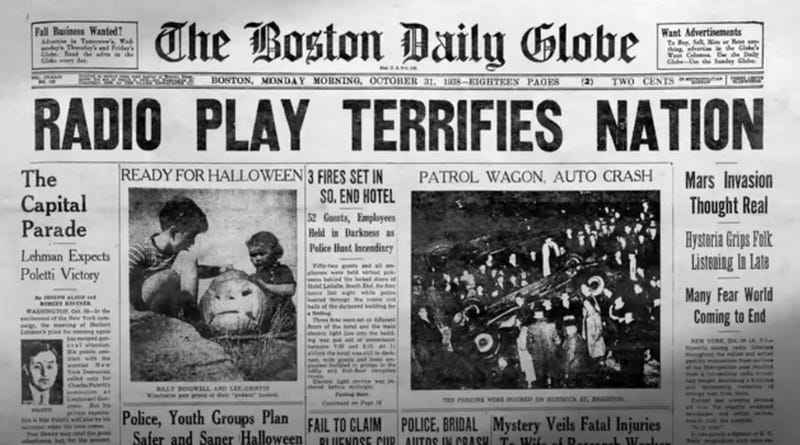Much of the most successful and widely consumed storytelling in our digital age is transmedia or strives to be. Where multimedia storytelling presents the same story on different media platforms, transmedia campaigns tell a full story only as a sum of their parts. Henry Jenkins coined the term in 2003 and calls it “entertainment for the age of media convergence.” It reflects our participatory culture, where collective intelligence and activity can continually expand a narrative.
There is a growing understanding that presenting any vision/story as a multimedia or transmedia project tends to garner more audience involvement. Fans can also be introduced to the story via different channels. Ideally, each medium in transmedia storytelling contributes something to the story, so immersive story worlds support some of the most successful franchises- The Matrix, Star Wars, and Star Trek to name a few. Those franchises benefit from a synergy of the canon (official content) and the fandom. TheOneRing.net, a fan site for Lord of the Rings, as well as several Harry Potter-related websites have enormous followings where users create different types of content inspired by their story worlds.
While transmedia entertainment might be exemplified by fictional epics, marketing campaigns for everything from cars to computers are constantly trying different tactics or mediums to surprise and excite customers. This might not be true transmedia- the different aspects of a campaign don’t generally contribute to a grand narrative- but the motivation is the same. Coca-Cola’s “Happiness Factory” campaign successfully combined storytelling and marketing with a series of animated videos, music, a ringtone, and skins for Xbox consoles. The marketing of popular music continually pushes toward transmedia to engage fans. This year Rihanna released an app and website with Samsung to promote her album Anti, and Beyonce created a visual album for Lemonade, allowing the world to see it for free on HBO before releasing it exclusively on Tidal. Radiohead took an unorthodox approach that created buzz for their album by having all of their social media pages fade and disappear. They sent mysterious leaflets with lyrics from “Burn the Witch” to fans- and then returned to social media with a preview of the music video for it.
In the quest to be ever more exciting and unexpected, advertisers sometimes trip over ethical lines. In 2009, Sony Pictures created a website for The Institute of Human Continuity to promote their disaster movie 2012. NASA received concerned emails from people who didn’t realize the site was fake. This wasn’t the first promotional project to cause public confusion or alarm, and one of the most infamous is the 1938 radio broadcast of The War of the Worlds, adapted and narrated by Orson Welles. The first two-thirds of the program was presented as a news bulletin complete with audio of an alien attack. Some panicked believing the broadcast was real, although the outrage may have been exaggerated by newspapers looking to discredit radio as an informational outlet.
 |
| Photo: Gizmodo |
The term transmedia doesn’t just describe our entertainment. Clay Shirky insists in Here Comes Everybody that “Communication tools don’t get socially interesting until they get technologically boring.” While global connection and communication via the Internet have existed for decades, their ease and availability are increasingly widespread. Our transmedia communications are both improved and complicated by this. Consider the “narrative” of our social relationships- we text, call, email, and use social media on top of our in-person interaction, and it undeniably shapes our relationships. It shapes our evolution as social creatures. It shouldn’t be surprising then that as communication technology further permeates, communications better reflect our world, and reflect people- not just the elite.
To consider that in one narrow context- how and how well we are informed of “news”- we can study the recent presidential election in light of its surprising result. While mainstream news outlets certainly made mistakes like taking their time before fact-checking Donald Trump on network television and sharing misleading early polls that predicted a decisive Clinton victory, the “news diet” of Americans is changing. A Pew study this year found that 44 percent of adults get news from Facebook. The study is part of an ongoing examination of social media and news which also found that a majority of people got news online while they were doing other things, rather than specifically seeking it out. Buzzfeed published an article this week claiming that fake election news stories outperformed real news on Facebook in the final months of the election. While their analysis is somewhat misleading (they used a small sample size and only considered “real news” from 19 top outlets), false stories do proliferate on the site and all but three of the top 20 fake stories were either pro-Donald Trump or anti-Hillary Clinton in the final months of the election. Mark Zuckerberg says Facebook will be working on better flagging and removal of fake news. Wired also explored the influence of Facebook in the election- namely, that it helped raise the bulk of Donald Trump’s $250 million in online donations. Like his predecessor, Trump’s campaign used Facebook to workshop ad strategies, interact with supporters, and start new conversations.
It’s unclear just how the “echo chambers” we construct for ourselves via social media and our news diets affect our politically polarized nation. It is apparent that a transmedia election is not transparent, that the responsibility to be well-informed is up to and adjustable to the individual, and that not all of us take that as seriously as we should.



No comments:
Post a Comment